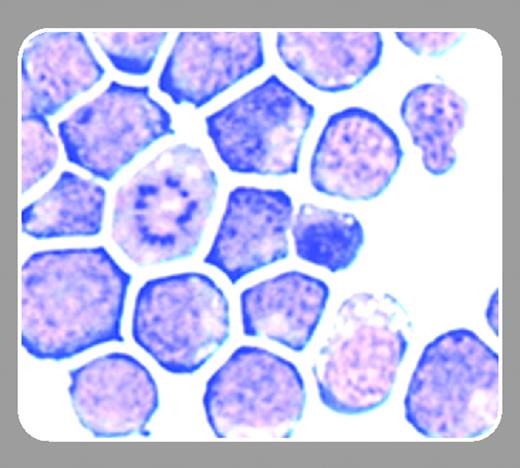HEMATOPOIESIS
Hematopoietic stem cells continuously make decisions between self-renewal (proliferation without loss of developmental potential) and commitment/terminal differentiation. At least in leukemia, renewal requires the cooperation of transcriptional regulators/chromatin remodeling factors with signals from cytokine receptors/receptor tyrosine kinases.1 Recently, we succeeded in expanding primary erythroid progenitors into mass cultures, which requires ligand activation of the erythropoietin receptor (EpoR) and c-Kit together with the glucocorticoid receptor (GR).2,3 Expansion of erythroid progenitors in vivo during stress erythropoiesis involves the same players.4 Differentiation of expanded erythroid progenitors to mature, enucleated, and hemoglobinized erythrocytes requires EPO only. Thus, the EpoR can cause both terminal erythroid differentiation and erythroid progenitor proliferation, dependent on cellular context. This is in line with the role of abnormal EpoR signaling, caused by the EpoR mutation R129C or association with gp55, in its cooperation with the short isoform of RON/Stk in murine Friend erythroleukemia.5,6 The EpoR is likely to form a signalosome-like complex with several receptor tyrosine kinases (RON/c-Kit) and diverse signal transducers, such as cytoplasmic tyrosine kinases and serine kinases (Janus kinase 2 [Jak2], Lyn, Btk), scaffolding proteins, and downstream adaptor proteins (Gab1/2).7 It is unclear, however, how the composition and function of this signalosome vary during progenitor renewal and differentiation.FIG1
In this issue, van den Akker and colleagues (page 4457) unraveled part of the molecular machinery underlying this dual function of EpoR signaling in erythroblast renewal and terminal differentiation. Using near-primary erythroblasts, they discovered clear differences in EpoR signaling leading to progenitor expansion or terminal differentiation. In particular, they observed a differential role in renewal and differentiation of the tyrosine kinase RON and differential utilization of the scaffolding proteins Gab1 and Gab2 downstream of Ron and the EpoR. Gab1 associates with and is activated in a complex with RON and the EpoR, where Epo signaling activates Ron, which then activates Gab1. In contrast, Gab2 is phosphorylated by the EpoR in a RON-independent fashion using phosphatidylinositol 3-kinase (PI3K)- and Src-family kinase-dependent pathways. Using a Ron-Trk chimeric receptor driven by a ligand not active on hematopoietic cells (NGF), the authors were able to show that activated Ron fails to activate signal transducer and activator of transcription 5 (Stat5) while inducing signaling via Gab1 as well as mitogen-activated protein kinase (MAPK)- and PI3K/protein B kinase (PI3K/PKB)-dependent pathways. Importantly, RON signaling contributed to erythroblast renewal but failed to drive differentiation, which we previously showed to rely on Stat5 activation.3
These findings provide a paradigm for combinatorial action of multiple receptors/signal transducers in the EpoR signalosome, leading to widely different responses in defined progenitors. Similarly, the combined action of receptor tyrosine kinases, in cooperation with transcriptional regulators, may drive hematopoietic stem cell renewal.1 Thus, the detailed, molecular analysis of signal transduction in near-primary erythroblasts allowing physiologic phenotypic readouts (as presented by van den Akker et al) may well lead to new insights into stem cell function in normal hematopoiesis and leukemia.


This feature is available to Subscribers Only
Sign In or Create an Account Close Modal